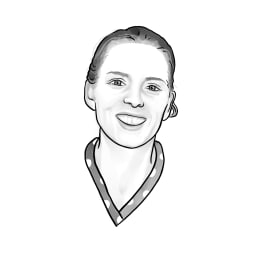
Switching to a more sympathetic publisher is possible, says this UvA professor
The sudden sale of Amsterdam University Press (AUP) to a commercial publisher caused quite a stir. Reason enough to investigate whether there is another way, says UvA professor Sible Andringa, who has already switched to a more science-friendly form of publishing. “Scientists have more power than they think.”
What is wrong with the academic publishing world?
“That world is largely in the hands of five large publishing companies (Elsevier, Sage, Springer-Nature, Taylor & Francis and Wiley, ed.) with a profit-driven motive. They have traditionally had a monopoly and own the most prestigious academic journals. This has enabled them to turn open access publishing, making scientific results available online free of charge, into a lucrative business. Scientists have to pay these publishers to be able to publish open access. In addition, all kinds of new publishers have emerged who have discovered that there is a lot of money to be made from scientists who are forced to get their work published.”
The image that commercial publishers are slowly but surely eating away at the scientific world is not accurate, writes Science Guide, following research by Brazilian researchers. The market share of the five largest publishers has actually fallen from 65 per cent to 44 per cent over the past thirty years. Smaller, independent publishers are growing rapidly, especially in countries in the global south. In countries such as the Netherlands and the United States, this growth is lagging behind because scientists in those countries are still more dependent on large publishers for their career opportunities.
In the Netherlands, 92 percent of scientific articles are open access, according to the latest report by Pascal Braak, open access specialist at the UvA and HvA Library. This figure is to rise to around 95 percent for 2024, expects Braak, who reports the figures annually to the Ministry of Education, Culture and Science (OCW). The Netherlands’ leading position in this area is thanks to OCW Sander Dekkers, who made a principled choice in favour of open access publications in 2013. Within ten years, the then State Secretary for OCW wanted to make all scientific research in the Netherlands, which is already paid for with taxpayers’ money, publicly accessible.
Open access in the Netherlands sounds like a success story.
“Not entirely. Open access comes in different forms. Firstly, it often works in such a way that the researcher has to pay the publisher themselves to compensate for the lost income. In the Netherlands, we are in a good position because the umbrella organisation Universities of the Netherlands has a deal with publishers that allows Dutch scientists to publish open access for free up to a certain quota. This often comes to an end in November. But if you don’t live in the Netherlands or work for a university of applied sciences, you can’t publish open access for free. This creates inequality: within the Netherlands, but also between rich Western universities and poorer universities in the Global South.”
Why did you switch to a different form of publishing?
“For us, the last straw was when the publisher – the Dutch commercial publisher John Benjamins, which is more sympathetic and smaller than the big five – sold our journal, the Dutch Journal of Applied Linguistics (DuJAL), to libraries, even though we were already paying the publisher to publish our articles open access. This is called double dipping. We also wanted more freedom in terms of when we published, rather than per issue. That’s why we switched to Open Journals. After the switch, we, the editorial team, wrote a passionate argument about inequality in the publishing world.”

How does Open Journals work?
“Open Journals is an online platform, an initiative of KNAW, which publishes scientific publications via the Diamond open access model. This means that an article is accessible to everyone, without any cost to the author.
Who pays for it?
“Financing open access has always been complicated. Publishing does not have to cost a lot of money, especially in an age when we only publish online. But it is not completely free. Open Journals is financed by research groups, faculties, the NWO and universities. We have the advantage of being backed by an association from which we receive membership fees (the Dutch Association for Applied Linguistics). This covers the annual costs of around five to six thousand euros.”
How big is Diamond open access?
“Small. I estimate that it still accounts for less than 5 per cent of the total open access offering.”
Why aren’t more scientists making the switch?
“It’s not always easy. You have to break with your current publisher, and if you’ve been working on a series with that publisher for thirty years and the rights are theirs, it also means you have to stop that series and start a new one. Those are painful choices.”
“It also takes time to build a new reputation: a new journal does not immediately have the recognition needed to attract top scientists. And scientists who want to pursue a career in the Netherlands do so by publishing in leading journals, most of which are owned by commercial publishers. So it also requires a cultural shift in how we assess and value scientists.”
In other words, scientists are stuck?
“It’s a difficult position, but scientists have more power than they think. Don’t forget that all journals rely on the voluntary work of scientists. If we don’t write, submit and review for them, there’s nothing to publish.”
“There are places you can go if you want to publish books for free open access. There are examples of editorial teams that have moved en masse to a more sympathetic publisher. The journal Glossa, for example, left Elsevier and is now very successful again.”

